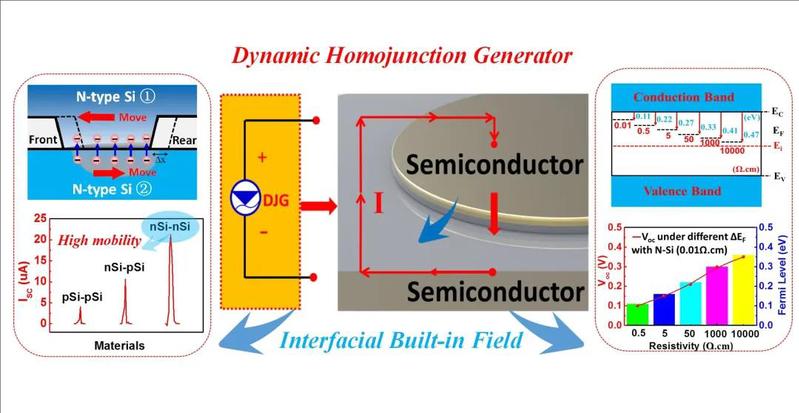With the rise of emerging industries such as the Internet of things, artificial intelligence and big data, new requirements for energy supply technologies are put forward, that is, an urgent need to find an in-situ energy acquisition generator that can obtain environmental energy anytime and anywhere without environmental restrictions. Compared with electromagnetic generators, dynamic diode generators have the advantages of lightweight, low resistance, and integration.
Searching for light and miniaturized functional device structures for sustainable energy gathering from the environment is the focus of energy society with the development of the internet of things. The proposal of a dynamic heterojunction-based direct current generator builds up new platforms for developing in situ energy. However, the requirement of different semiconductors in dynamic heterojunction is too complex to wide applications, generating energy loss for crystal structure mismatch. Herein, dynamic homojunction generators are explored, with the same semiconductor and majority carrier type. Systematic experiments reveal that the majority of carrier directional separation originates from the breaking symmetry between carrier distribution, leading to the rebounding effect of carriers by the interfacial electric field. Strikingly, NN Si homojunction with different Fermi levels can also output the electricity with higher current density than PP/PN homojunction, attributing to higher carrier mobility. The current density is as high as 214.0 A/m2, and internal impedance is as low as 3.6 kΩ, matching well with the impedance of electron components. Furthermore, the N-i-N structure is explored, whose output voltage can be further improved to 1.3 V in the case of the N-Si/Al2O3/N-Si structure, attributing to the enhanced interfacial barrier. This approach provides a simple and feasible way of converting low-frequency disordered mechanical motion into electricity.

paper:https://spj.sciencemag.org/journals/research/2020/5714754/
Lin's personal homepage: https://person.zju.edu.cn/en/sslin
